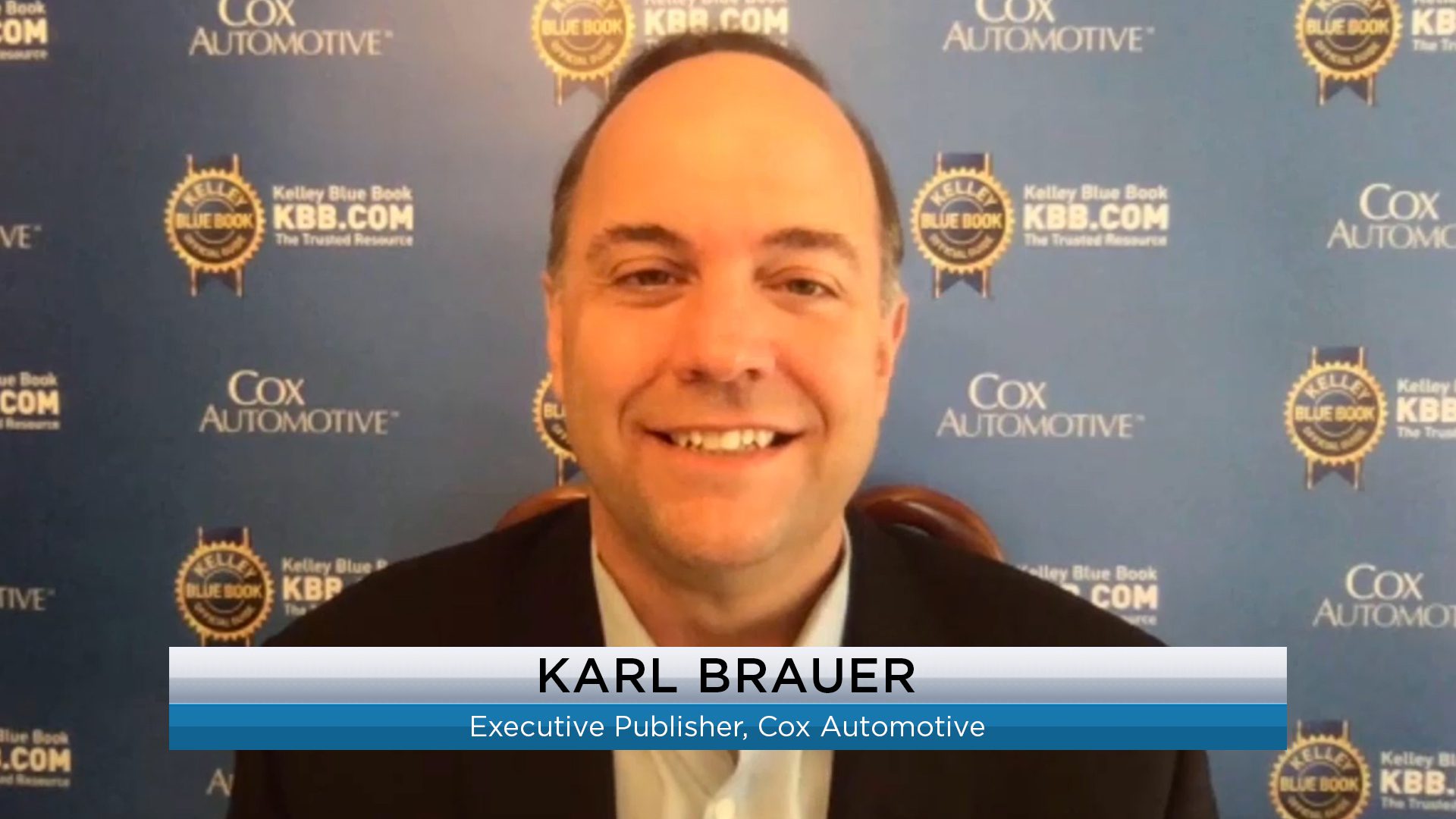May, typically one of the best sales months of the year, posted a SAAR of 17.4M, well above the 16.9 million that was forecasted and up from 17.26 million in 2018. May’s performance usually tells us how the rest of the year will play out. However, with low-interest rates, high vehicle prices, and uncertainty in Washington, there are numerous factors to consider before making any long-term predictions. Here to discuss May’s winners, losers, and overall industry health, is Karl Brauer, executive publisher for AutoTrader and Kelley Blue Book (Cox Automotive)
TRANSCRIPTION:
Speaker 1:
From our studios in Atlanta, this is Car Biz Today. Here now, Jim Fitzpatrick.
Jim Fitzpatrick:
So, tell us, rumor has it that the industry is a little bit of a tick up. Talk to us about that.
Karl Brauer:
Yeah. You know, every year May is kind of a pivotal month. May is considered a big deal month. It’s the first real kind of semi summer season selling month and it’s also got Memorial Day weekend. So, you can really tell a lot about the year by the month of may even if the previous months have been maybe either incredibly up or incredibly down. May is usually very telling. Which is somewhat reassuring that we had an up month. May did better than a lot of people’s estimates and most of the brands were up as well. So, that’s the good news. We do seem like this month if it were to be indicative of the entire year, it would be very optimistic and positive to see what we’ve got coming for the rest of the year based on May alone.
Karl Brauer:
Now, we also know you and I both know, Jim, that we’ve had some recent shifts in say political positions and tariffs from one of our biggest trading partners, Mexico.
Jim Fitzpatrick:
There’s tariffs?
Karl Brauer:
So, we really don’t know what the rest of the year is going to do but certainly based on just May’s numbers, they’re good. Based on all the other variables we both know are out there, who knows right?
Jim Fitzpatrick:
Now, you did mention that earlier when we were catching up that flee had a lot to do with it. Talk to us about that.
Karl Brauer:
Yeah we still have a lot of the same indicators that we’ve had for the last several months. Even before the start of this year which is great economic indicators for income growth and earnings and job numbers, but not particularly good numbers for transaction prices. So, when you’ve got rising transaction prices and rising interest rates, you have rising monthly payments. Then if you have some cutbacks in credit availability which we’ve also seen in the last six months, you also have fewer credit options. Those three things come together to impact sales and it’s probably the main reasons we saw sales generally struggling so far this year.
Karl Brauer:
May being an up month is great, but it’s one of the few times that we’ve had a bright spot for the last several months. When you look closer at the numbers, you see suggestions that fleet did drive a good chunk of May upside which would go along with what I just said which is that consumer spending based on prices and interest rates and credit availability is still being a little bit curtailed.
Jim Fitzpatrick:
Yeah.
Karl Brauer:
You look at things like say the Dodge brand being up and specifically the Charger being up. Well, Charger is not a brand new car and there’s no real reason for it to be up unless there was an extra amount of fleeting going on. You look at a brand like Honda that was down for the month when so many other brands were up. Honda doesn’t fleet. Honda is very restricted. They hardly use any fleeting whereas most of the other brands are more willing to turn that knob to get the numbers up. So, again it seems like fleet played a larger role than we might want it to versus retail demand.
Jim Fitzpatrick:
Tell us about interest rates. We hear a lot about the fluctuation of rates and what’s happening there. There seems to be some consternation out there about that. Where is that headed and what kind of an impact does that have?
Karl Brauer:
Well, the good news is is that we don’t think there’s going to be much more elevation in the near term. There’s enough kind of concern I think at the fed and a lot of other levels of government and economic kind of studies to suggest that they don’t want to overdo this interest rate, the interest rate hikes. Obviously they like some interest rate to play with. When you’re at zero interest or barely above zero, you got nowhere to go if the economy really starts to go the other way. So, I think they like the idea of having something to play with there and getting them off the zero marks or just above zero where they’ve been for so long.
Karl Brauer:
But you’ve also seen some real curtailing in again, cars specifically and some other spending too. Housing has gotten tougher in the last year. So, I think what we’re going to see is a moderating of these interest rate hikes that were expected to be kind of continued and consistent over the next couple years. We might see a little bit of moderating, but we’re already at levels that have again combined with transaction prices really cranked up the monthly payments for people. By the way Jim, what that’s done is send a lot of people wisely to used and CPO cars. You’re seeing a lot of activity on both the generally the used and specifically the CPO, the certified pre-owned which is a really great option for a lot of people who otherwise maybe can’t afford or may be a little hesitant to buy new.
Karl Brauer:
You still get those great warranties. You get a new car experience, a new car piece of mind, but you save some money off of the new car transaction prices that are going so high.
Jim Fitzpatrick:
What other things that jump out about May’s data reports for new and used vehicles that are notable?
Karl Brauer:
You know, just that maybe there’s been in the past month at least, there was enough kind of stabilization of concerns that people were willing to spend. Plus you roll in the Memorial Day holiday where there was probably some extra incentive provided by dealers and manufacturers. What’s interesting though is again like I mentioned before, not necessarily what’s going on with May, because it really just seemed kind of the similar story but a little more on the positive side probably because of some fleet factors versus the previous four months of the year.
Karl Brauer:
The more interesting story is what’s going to happen for the rest of the year, Jim and we would love to see the rest of the year be kind of following the same cadence that we just saw this month and even for the year. If we can be within 5% of the market numbers for the last several years, we’re still doing really well, right? If there’s a Mexico tariff that starts to come in at 5% and goes up from there on June 10th, that’s going to have a massive impact on the car industry and really the entire global economy here. It’s certainly the US economy because of how many vehicles and how many supplier and component items that are part of the car manufacturing process come from Mexico. It’s not just the cars that are down there. A lot of people forget that even if you buy a car that’s assembled in the US or Canada. A lot of the parts and components very well could have come from Mexico.
Jim Fitzpatrick:
That’s right and probably did in most cases, right?
Karl Brauer:
You know, they’re our biggest trading partner. People assume Japan. Everyone knows about Japan. We hear about Japan a lot and certainly Europe and Canada. Mexico is our single largest trading partner in the automotive industry.
Jim Fitzpatrick:
Yeah. So, what are you predicting for a [inaudible 00:07:07] after May?
Karl Brauer:
Well, just like we knew that China tariffs were kind of one big switch that could go either way. Now we’ve got the Mexico tariffs too that have just come onto the playing field that we don’t know where they’re going to end up. So, it makes predicting total year sales so difficult. Now one of the things we saw or at least theorized was what if these latest rounds of tariff threats forced some pull forward sales? If you really think that there could be some massive changes in pricing due to huge trading partner like Mexico being taxed on tariffs, you might run out and buy your car sooner than later. Which could end up making June for instance look really good, but of course you and I both know pull forward sales come back eventually.
Jim Fitzpatrick:
Oh I know every time.
Karl Brauer:
Yeah. Think about it Jim. You get those tariffs coming in bumping prices up while people have already bought ahead of time and pulled forward. Sales could go right off a cliff.
Jim Fitzpatrick:
Exactly. Just what we don’t need.
Karl Brauer:
Yeah. So, it’s really hard to predict. So, let’s pretend that things stay relatively sane and Mexico works with us and the tariffs don’t go any place and China works with us and crazy tariffs don’t go into place, I think we’re still completely possible of hitting high 16 for the year. I think you could still easily hit 16, 8, 16, 7 for 2019.
Jim Fitzpatrick:
Still a strong market.
Karl Brauer:
Which is a great market. Is that not a great market or what? But some big variables out there in the equation that we really can’t solve for like those Xs are sitting there and I don’t know what we’re going to solve for them.
Jim Fitzpatrick:
Well, Karl, thank you again. I really appreciate all your time and we’ll see you here back in just a few weeks.
Karl Brauer:
Let’s see what we talk about next time. You never know what it’ll be but we’ll be here to find out I guess.
Jim Fitzpatrick:
That’s right. All right man, thanks again.
Speaker 1:
CBT automotive network. The number one most watched network in retail automotive. This has been a JBF Business Media production.







